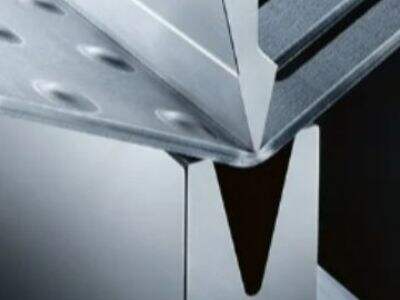Importance of Tolerances in Custom Sheet Metal Fabrication
Tolerances are an important part of custom sheet metal fabrication and the accuracy of the final product depends on them. When you are doing a custom sheet metal design, you really need to make certain that the given tolerances are such that will allow the product to work as it should. Tolerances may be different depending on the complexity of the design and the materials used. For example, if you have detailled parts, you need micron-grade precision.
How to Get Micron-Level Precision on Custom Sheet Metal Products
Micron-level accuracy is a must for custom sheet metal projects, and it requires careful planning and precision. Some tips on how to get tight tolerances for your custom sheet metal work:
-
Utilize Excellent materials: The higher quality the material you use, the more accurate the result. High-quality sheet can be utilized to keep its final dimensions within tolerance.
-
Invest in precision tools – They are necessary for you to reach tight tolerances in your custom metal fabrication sheet. Invest in good tools so that you don’t have to worry about how to take the measurement, how to make cuts, or what the finished project will look like.
-
Follow best practices: It is important to follow the best practices in custom sheet metal fabrication to get micron-level accuracy. This could be adhering to a set quality control process, having a clean and tidy work area, or constantly ensuring your equipment is accurate.
How Technology helps to maintain Tight Tolerance on Custom Metal Sheet Forming
Design and Tolerances Technology takes a big factor in keeping up with the tighter tolerance in custom sheet metal fabrication. With the right software and equipment, fabricators can accurately design, cut, and piece custom sheet metal products together. Most fabricators have CAD-capability to generate a graphics-based 3D model of the final product, this can be useful to identify potential problems or deviations from tolerance. Furthermore, the sheet metal parts can be cut and formed with CNC machines, so that the final components meet the tolerances, which are specified.
Typical Problems When Getting Close Tolerances in Custom Sheet Metal Work
Although precision measured in microns is key to custom sheet metal fabrication, fabricators must address a series of obstacles. One problem is that the sheet metal may be distorted during manufacture, and may not have the final dimensions that it is intended to have. In order to address this issue, a fabricator can employ methods such as pre-bending or post-weld adjustment procedures to prevent the sheet metal from distorting (deforming) and from deforming in size.
ASCII) A problem is also represented by the difference in the thickness of the material, which may have an influence on the general accuracy of the product. To tackle this problem, manufacturers can use materials of uniform thickness or utilize methods like laser cutting to achieve uniform thickness.
How To Inspect & Certify Tolerances For Custom Sheet Metal Parts
It is important to verify and certify tolerances in custom sheet metal parts to make sure the goal is achieved. Fabricators have several options available to them for tolerance verification including dimensional inspection, coordinate measuring machines (CMM), and optical measurement systems. This gives fabricators the ability to verify component dimensions and determine any potential tolerances.
Once the tolerance is confirmed, the fabricators may issue certificates indicating the product conforms to the specifications required. Certification papers help to verify that the part has been manufactured to the required tolerances and help to instill confidence in the customer regarding quality and accuracy of the custom sheet metal component.
Table of Contents
- Importance of Tolerances in Custom Sheet Metal Fabrication
- How to Get Micron-Level Precision on Custom Sheet Metal Products
- How Technology helps to maintain Tight Tolerance on Custom Metal Sheet Forming
- Typical Problems When Getting Close Tolerances in Custom Sheet Metal Work
- How To Inspect & Certify Tolerances For Custom Sheet Metal Parts


